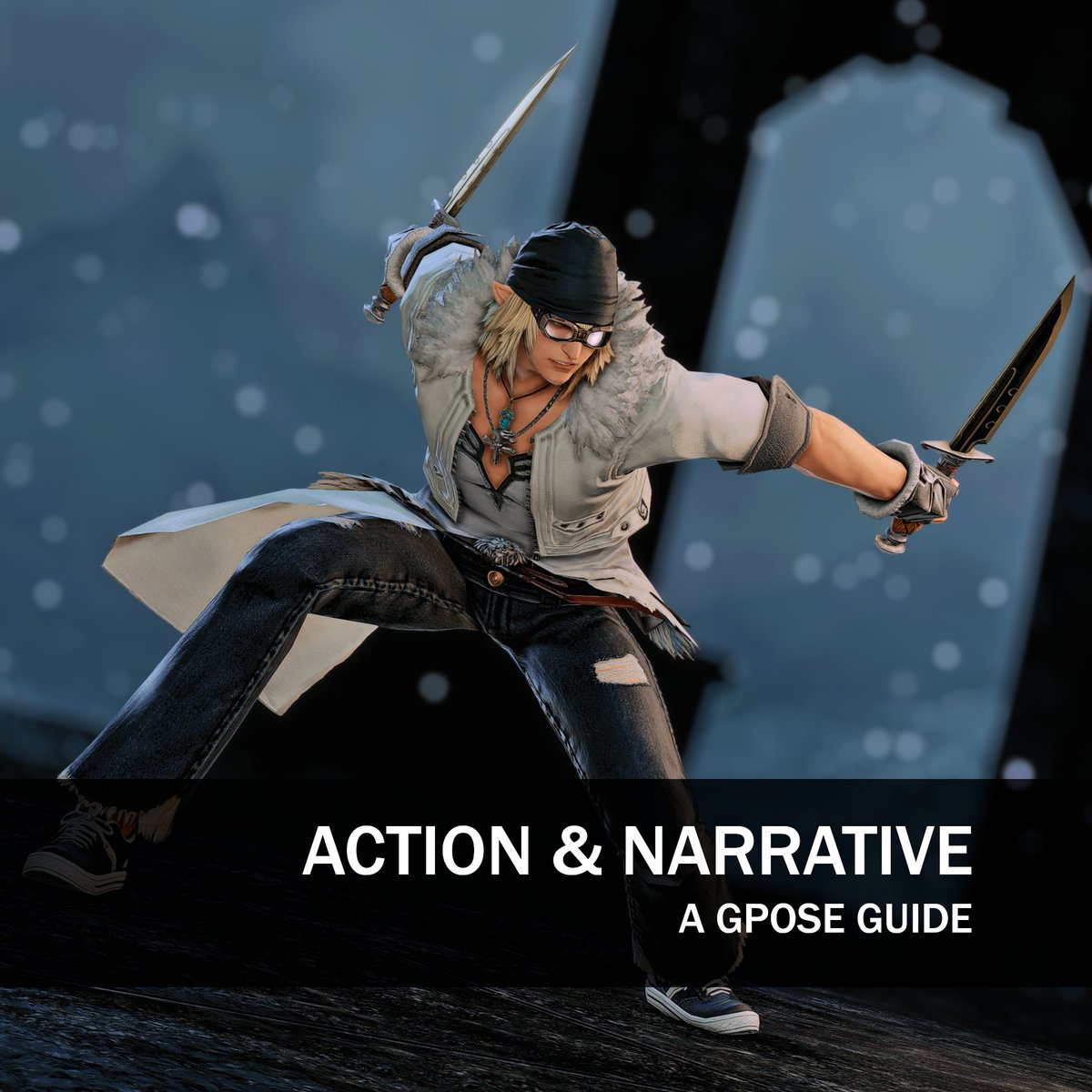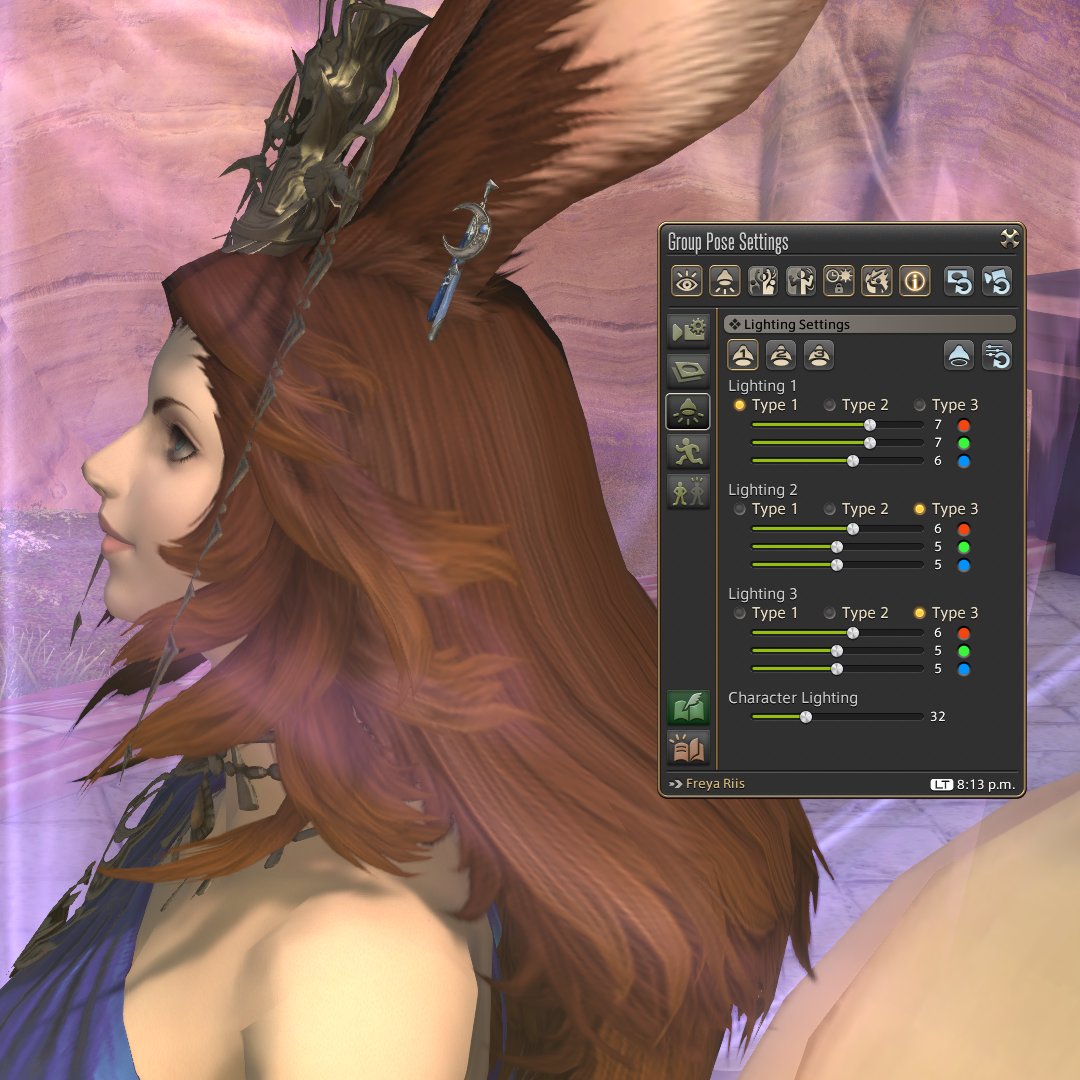A short GPose Guide: Action & Narrative
Eorzea is a living, breathing world, and our WoLs' stories are part of it. Here are some tips - some, borrowed from real-life photography - that'll help convey their actions and stories!
#ffxiv #gpose #gposeguide
Eorzea is a living, breathing world, and our WoLs' stories are part of it. Here are some tips - some, borrowed from real-life photography - that'll help convey their actions and stories!
#ffxiv #gpose #gposeguide

1 - Narrative Shots
Susan Sontag, in her book On Photography, said: "There is the surface. Now think - or rather feel, intuit - what is beyond it, what the reality must be like if it looks this way."
A narrative shot tells a story at a glance.
en.wikipedia.org/wiki/On_Photog…
Susan Sontag, in her book On Photography, said: "There is the surface. Now think - or rather feel, intuit - what is beyond it, what the reality must be like if it looks this way."
A narrative shot tells a story at a glance.
en.wikipedia.org/wiki/On_Photog…
In gpose we have several resources that can help us with that. The basics are expressions (a subgroup of emotes), gaze control, and lip movements; they can bring a character to life by turning the default doll-like expression into something truly expressive. 





In the following sequence, we can see what that means. From just standing around to walking and to a directed gaze with mid-sentence labial capture, you can see how a more complex expression can be achieved with simple details. 





For more information on gpose controls for expressions, gaze, and lip movements, check out this thread:
https://twitter.com/LeonAquitaine/status/1424151203429113856
Next, we have animations - and, more to the point, keyframes. In gpose, you can pause an animation (say, for an emote or a class skill) at any given time, and use it to compose a scene. 



A detailed description on how to do this can be found here:
https://twitter.com/leonaquitaine/status/1424208740291694594
Now, let's borrow a real-life concept: narrative lighting. As the name implies, we can use light placement to help tell a story. 

Take a look at this scene. The shadowed, silhouetted characters tell about their emotional state; the hazy, faded blue communicates solitude, and the ruins contribute to the sense of abandonment. 

Now let's try the same lighting approach, but for a polar opposite: This is a moment of elation, the vanilla sky and the sun communicating intensity and innocence. The scene is clear and warm, but not overly bright. 

2 - Action shots
In addition to the principles of narrative shots, action shots convey *motion*. Not only there's something going on, but the shot captures an instant where the subject is on the move.

In addition to the principles of narrative shots, action shots convey *motion*. Not only there's something going on, but the shot captures an instant where the subject is on the move.


Take a look at this composition. Several elements contribute to the sense of movement: Louise's NIN keyframe is moving *fast*. With a resolute expression, her closed eyes convey a thought. Leon's NIN keyframe conveys an impact so powerful he's flying away. 

But we want more. Let's add a radial blur centered at the door to impart direction to the movement. the particles hints at a turbulent wind, and the floor and walls create leading lines, helping with the sense of motion. 

Have you ever heard of the term Dutch Angle? It's a technique to convey tension or uneasiness by tilting the camera in its roll axis: 



It's also a misnomer: according to Wikipedia, the name is a corruption of 'Deutsch', and refers to the origin of the technique.
en.wikipedia.org/wiki/Dutch_ang…
en.wikipedia.org/wiki/Dutch_ang…
Now some quick samples! A super bright shot, with golden and white tones conveying divinity and apotheosis. She's not paying attention to you. =) 

MOAR dutch angle! Something disturbing is happening. Leading lines from the floor and ceiling provide direction and framing to the character. 

Again, this is by no means a comprehensive guide, but I hope these simple tips help you create more expressive shots! 



Oops, I forgot the references! If you want to learn more about narrative lighting, check these links:
Storytelling Through Light, Emotion and Composition
clickitupanotch.com/storytelling-t…
Narrative Lighting 101
Storytelling Through Light, Emotion and Composition
clickitupanotch.com/storytelling-t…
Narrative Lighting 101
• • •
Missing some Tweet in this thread? You can try to
force a refresh

























